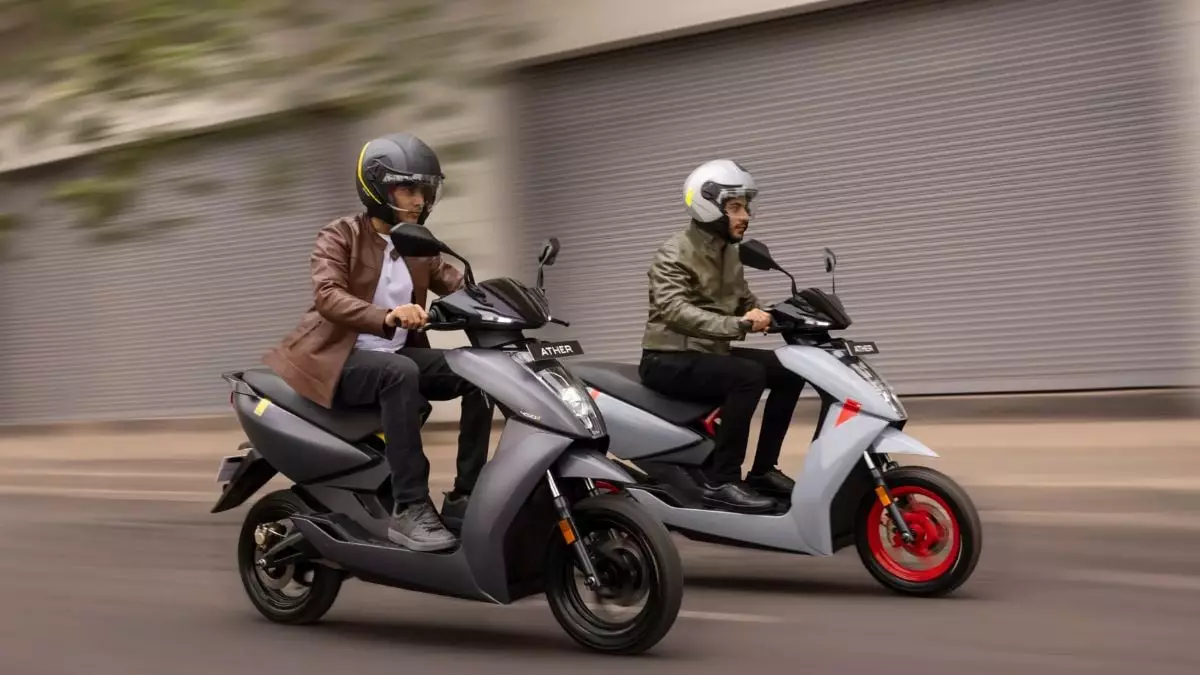The electric vehicle landscape in India has seen a significant transformation with the recent unveiling of the 2025 Ather 450 series. As a frontrunner in the electric scooter market, Bengaluru-based Ather Energy has brought forth three distinct variants in this lineup: the Ather 450, Ather 450X, and Ather 450 Apex. This article delves into the specifics of this new series, assessing both the advancements it brings and the implications of its pricing structure.
The initial price points for the 2025 Ather 450 series are critical to note, especially given the upgrades made to these models. The entry-level 450S is priced at Rs. 1,29,999, while the Ather 450X is available at two price tiers, Rs. 1,46,999 for the 2.9kWh battery and Rs. 1,56,999 for the 3.7kWh variant. The top-tier Ather 450 Apex comes in at Rs. 1,99,999. These price increases raise important questions about market positioning and consumer accessibility. While the upgrades justify some of the price hikes, potential buyers must weigh these costs against their expectations of performance and range.
One of the standout attributes of the 2025 Ather 450 series is the introduction of a multi-mode traction control system, which is a first for electric scooters in this segment. The system includes three distinct driving modes—rain, rally, and road—each tailored to enhance rider safety and performance under varying conditions. For instance, the rain mode intelligently regulates acceleration to bolster safety on wet roads, while the rally mode offers a more responsive experience on rough terrains. This thoughtful engineering reflects Ather’s commitment to providing riders with flexible options suited to their needs.
Another noteworthy feature is the ‘Magic Twist’ regenerative braking system. This innovation allows riders to not only control acceleration but also decelerate by reversing the throttle. This dual functionality not only enhances the riding experience but also contributes to battery recharging, making it an efficient addition to the scooter’s design.
When it comes to performance metrics, the improvements in range are notable. The Ather 450S boasts a maximum range of 122 kilometers on the Indian Driving Cycle (IDC), while the standard Ather 450X reaches an IDC range of 126 kilometers. The 3.7kWh variant extends this figure to 161 kilometers. Meanwhile, the 450 Apex claims an impressive IDC range of 157 kilometers. This expansion in range comes with reduced charging times, promoting a more efficient urban commuting experience.
With charging times of up to 5 hours and 45 minutes for the 450 Apex, Ather has made strides in reducing wait times, which is a crucial factor for many electric scooter users who prioritize convenience. Moreover, the introduction of a Pro pack option offers additional features like WhatsApp integration and location sharing, further enhancing the utility of these scooters.
The 2025 Ather 450 series is not just about performance; it also offers aesthetic options to cater to diverse consumer preferences. The introduction of new colorways—Stealth Blue and Hyper Sand—adds a touch of personalization for buyers. A well-designed user interface is equally vital, and the new Ather Stack with features such as Alexa Skills and live location sharing, positions Ather at the forefront of tech-integrated two-wheelers.
As Ather Energy launches its 2025 450 series, it certainly raises the bar for electric scooters in India. With a strong lineup of features that prioritize safety, usability, and performance, these models represent a significant advancement in the domestic electric vehicle sector. While the price increases could pose barriers to some, the benefits provided—such as advanced technology, a multifaceted driving experience, and enhanced range—make these scooters a worthy investment.
Ather has successfully developed a compelling offering that addresses the needs of today’s eco-conscious urban riders, positioning itself as a leader in the burgeoning electric scooter market. The 2025 Ather 450 series not only epitomizes technological innovation but also reflects shifting consumer preferences towards smarter, more sustainable transportation solutions.



Leave a Reply